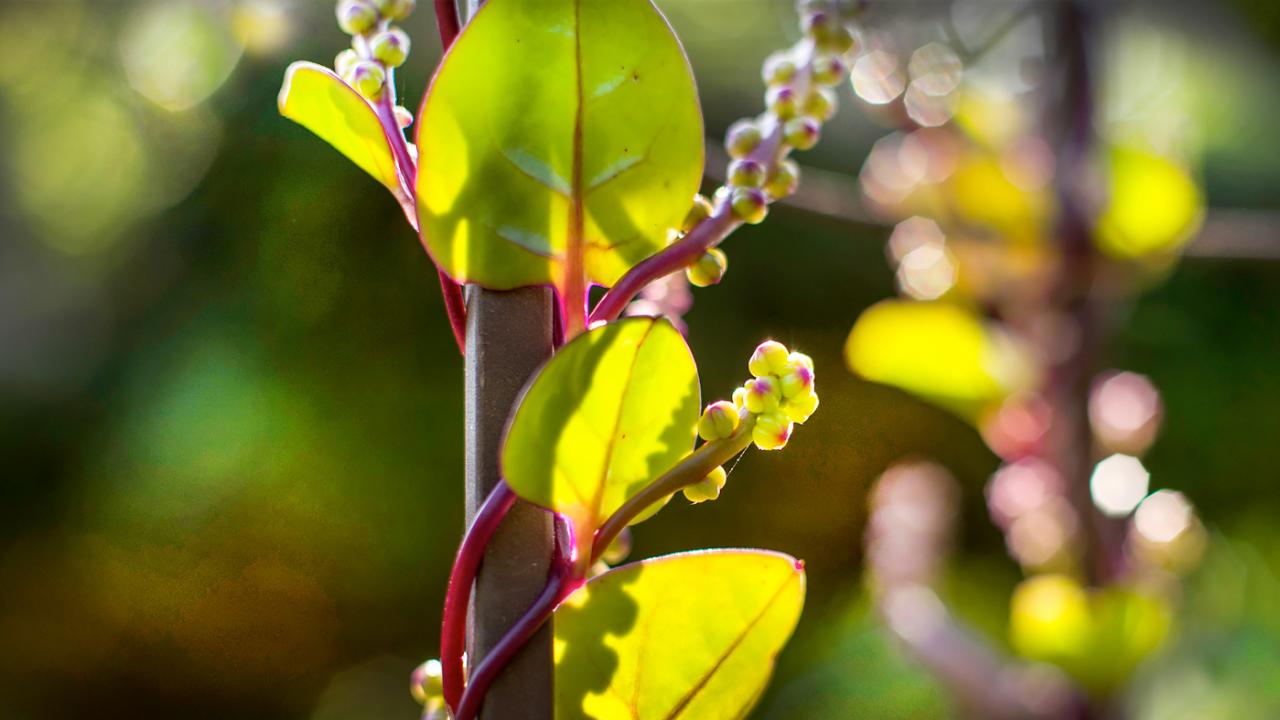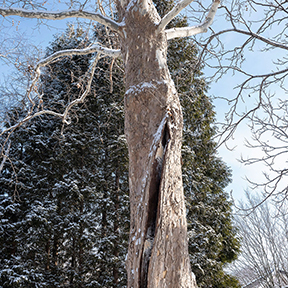

Plants &
Gardening
Garden Stories
Gardening Lessons in a Polar Vortex
 Extreme subzero temperatures, such as a polar vortex, aren't just hard on humans; they're also hard on some plants. Tom Tiddens, supervisor of plant health care, said an insulating blanket of snow on the ground helps. Snow is a good insulator for plants that are exposed to extreme cold temperatures, so any plants that are covered should not have damage to their root zone or plant parts covered by the snow.
Extreme subzero temperatures, such as a polar vortex, aren't just hard on humans; they're also hard on some plants. Tom Tiddens, supervisor of plant health care, said an insulating blanket of snow on the ground helps. Snow is a good insulator for plants that are exposed to extreme cold temperatures, so any plants that are covered should not have damage to their root zone or plant parts covered by the snow.
In one polar vortex, two sycamore trees in the Sensory Garden developed dramatic frost cracks. Tiddens also saw this happen in a polar vortex in 2014; the damage was also to a sycamore. Sycamores hold water in the xylem layer of their trunk more so than other trees, making them more likely to develop frost cracks. There is not much you can do if frost cracks happen except to watch the tree through spring to see if it begins to decline; most likely, the tree will survive this injury.
Other ways a polar vortex might affect plants negatively is in flower bud survival. Forsythia shrubs could see damage to any branches that were above the snow cover. Forsythia have flower buds along their stems. The stems that were above the snow cover could have the flower buds frozen off, but the flower buds that were under snow cover will survive. Tiddens saw this happen in another polar vortex. The bottom portion of the forsythia shrub bloomed just fine, but the top foot or so of the branches did not bloom; just green leaves emerged.
The same snow cover that protects the plants also protects the insects that spend the winter underground. If a polar vortex occurred with no snow cover, the extreme temperatures could reduce the number of soil-dwelling insects and damage shallow-rooted, marginally hardy plants. Japanese beetles, a common garden pest in summer, are one of those soil-dwelling insects, and unfortunately, they will survive a polar vortex.
Insects that live in the trees or on the stems of branches during winter might experience some die off, such as emerald ash borer larvae and Lymantria dispar moth eggs. Only a sustained period of time at below minus-20 degrees Fahrenheit will result in a significant die back in those kinds of insects.
Freezing and thawing are very hard on plants. Big / lengthy temperature fluctuations can sometime fool plants into acting as if spring has arrived. If, after a polar vortex, we get a mid- or late winter warm up that lasts more than a few days, some plants could be tricked into breaking dormancy and start sending water to their buds; the buds will swell. Those buds could get damaged by more cold temperatures that are sure to come. We need winter to stay winter for plants to remain safely dormant.
The lesson is to choose the right plant for the right place. Any plants that are marginally hardy in our zone, or that were planted in conditions they don’t prefer, will be the first ones that are damaged by extreme weather conditions. In fall, you can prepare newly planted trees by wrapping the trunks to protect them from pest or salt damage. A layer of mulch on garden beds placed after the ground freezes, but before the snow hits, keeps perennials protected from the freeze/thaw cycle. The mulch layer insulates the roots from extreme temperatures, in case we do not get much snow.

